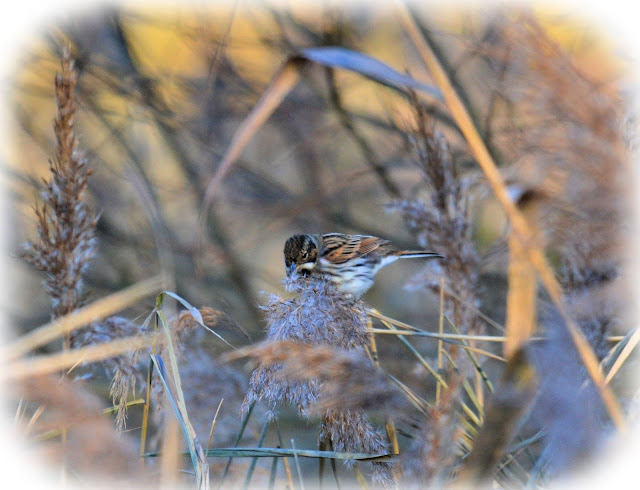It's been awhile since I have managed to get out for some wildlife watching, so with a decent weather forecast I had set my sights on a session at Rainham RSPB just across the river in Essex, but once again I was thwarted in my attempt by the horrendous traffic delays at the Dartford Crossing, the traffic information boards were warning of 20 minute delays.
I just can't do traffic jams these days, so luckily I managed to take the slip road before the jam and was quickly heading in the opposite direction on an open road towards the North Kent marshes on Sheppey.
As I moved along the free flowing road towards Sheppey I tried to recall the bird possibilities reported of late, there were the Snow Buntings at Shellness, an elusive Richard's Pipit, a distant Crane, always a chance of seeing some Short Eared Owls, maybe a Barn Owl, Harriers are always seen but recently a couple of Hen Harriers have been reported, I was feeling optimistic but time would tell if I made the wrong decision.
I decided to park up at Leysdown and walk down towards Shellness Hamlet in search of the Snow Buntings. Here's a view of the Wind Pump with the Swale nature reserve in the background
The tide was nearly in on my arrival, the usual Waders were seen Redshank, Oystercatcher, Turnstones, Ringed Plover , just two Sandlings were nice to see. and a flock of Brent Geese my first sighting this year.
 |
| Ringed Plover and Winter plumaged Sandling |
 |
| Redshank |
 |
| Oystercatchers and Brent Geese |
 |
| Turnstone |
There was also a large flock of Golden plover roosting on the fields, good numbers of Black Headed Gull and a few Common Gulls milling around.
As I approached the saltmarsh opposite Shellness Hamlet, a Pipit flew up and landed close by as if to check me out, try as I might, I could not turn this into the Richard's Pipit, just a Meadow Pipit.
 |
| Meadow Pipit |
A walk out to the point did not reveal the hoped for Snow Buntings, but Winter has only just arrived so plenty of time to look for them later.
Out on the Saltmarsh a few Little Egrets could be seen, but the seven Short Eared Owls that another observer had reported were keeping their heads down for me. I headed back to the car and moved on to Capel Fleet, huge numbers of Coot were gathering must've been well over two hundred, always seem strange to see them together in these numbers and tolerating each others company.
 |
| A raft of Coot |
A female Kestrel on the roadside wires searching for a meal gave me some nice photo opportunities, although not the hovering pose I am trying to get, smart bird though.
Other birds seen in this area were Red Legged Partridge, Pheasant, a male and female Marsh Harrier, Corn Buntings and huge flocks of Starlings, these were feeding on the spilt grain along the road. The Common Crane was in attendance, but a distant speck on the horison.
 |
| Starlings feeding on spilt grain |
 |
| Corn Buntings |
I headed over to Elmley lots of Buzzards on view, many varied plumages always a little distant for my lens but always a spectacular bird to photograph.
No sign of any Short Eared Owls or Harriers, the only other bird of note for me was this Stonechat
 |
Stonechat
|
Dusk was approaching so I thought I would return to Capel Fleet in the hope of a Barn Owl sighting. But as the sun went down, it was a no show for the owls, some nice sunset views though, so not a bad day in the end as I headed home.

















































